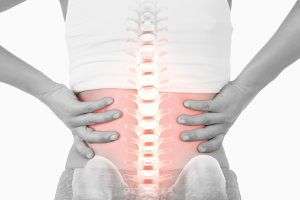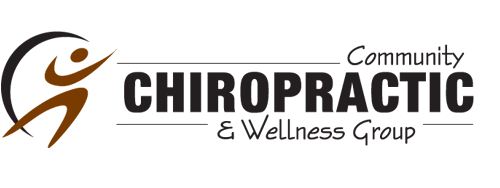Help Mac Find His Way to the Chiropractor! Help Mac Find His Way to a Healthy, Balanced Meal! Help Mac Find His Way to the Playground! A Visit to the Chiropractor Word Search Mac's Chiropractic Word Unscramble Mac's Cosmic Chiro Crossword
Read more
Vertebral subluxation refers to a set of signs and symptoms that affect the spinal column. Specifically, it is a complex that occurs when the bones of the spine lose their usual position and motion due to chemical imbalances, alcohol, prolonged sitting, trauma or even stress. An automobile accident and improper lifting are just two types of trauma that can cause vertebral subluxation complex, or VSC.
How Does Vertebral Subluxation Complex Affect the Body?
The term “complex” is associated with vertebral subluxation because, as the word suggests, the condition is multifaceted and consists of many elements. This is because VSC is the underlying cause of health care problems. When one or more vertebrae are misplaced or fail to carry out their intended motion, they can disrupt the function of the nervous system. The vertebral bones are designed to contain and guard this system, so interference can lead to pressure on the spinal cord or the nerve roots as they pass out of the spinal column. When VSC presents, a number of things can happen to affect the spine, its related soft tissues, and even the tissues and organs controlled by the affected nerves.
Vertebral Subluxation Complex and Its Five Interrelated Parts
VSC typically has — and is — identified by five major interconnected components, including:
- Spinal kinesiopathology. This component sounds much like vertebral subluxation itself. Here, the bones of the spine have lost their natural motion and position, making it difficult for the patient to turn and bend. It sets the other four components in motion.
- Myopathology. When the muscles sustaining the spine weaken, atrophy or become stiff, they can go into spasm. This can result in scar tissue that changes the muscle tone.
- Neuropathophysiology. If the spine functions improperly, it can obstruct, stretch or agitate nerve tissue. Nerve tissue is delicate. Irritation in these ways can cause nerve system dysfunction and lead to aggravating symptoms elsewhere in the body.
- Histopathology. A patient’s body temperature can rise due to an increase in blood and lymph supplies. This, in turn, can lead to inflammation and swelling, which can then cause discs to protrude, tear, herniate or deteriorate.
- Pathophysiology. This is when abnormal bony growths like bone spurs try to meld faulty spinal joints, leading to decay of the spine, scar tissue and nerve dysfunction.
The articles within this section discuss each of the five components further.
How Chiropractic Treatments Can Help
Your chiropractor will not only detect and minimize VSC, but, once the spinal bones are back in their normal position and have regained their natural function, he or she will try to prevent the problem from recurring. Chiropractic treatments, particularly spinal adjustments, can be used to treat VSC and ward off its associated symptoms.
To find out how chiropractic treatments can be designed to address your particular VSC-related condition, contact your practitioner.
-
Printable Games & Puzzles
Category: Wellness4Kids
-
Posture
Category: Health & Wellness, Life in Motion
The ancient Japanese art form of growing Bonsai trees is fascinating. Bonsai trees are essentially normal shrubs that have been consistently stressed in a particular way for a long time to create a posture which would never be found in nature. Depending on how the tree is stressed while it grows, it
Read more -
Movement
Category: Health & Wellness, Life in Motion
Imagine waking up one morning with a frozen shoulder where you couldn't move your upper arm more than a few inches in any direction. How much would that impact your ability to do your job? How much would that affect your ability to drive your car or even to dress yourself? How much would that affect
Read more -
Relationship with Self
Category: Health & Wellness, Healthy Thinking, Get Positive
Your relationship with your self is the most important relationship because as they say wherever you go there you are. Wellness begins with "being" well first and then is about "doing" things to be well. If you do not address who you are being than just doing things will not make you well. A simple way
Read more -
Positive Affirmations
Category: Health & Wellness, Healthy Thinking, Get Positive
We function a lot like computers: Garbage in produces garbage out, while great stuff in produces great stuff out. We talk to ourselves far more than we talk to others. In fact, most experts agree that about 80 percent of all conversations we have are with ourselves. All too often, we talk to ourselves
Read more -
Muscle Relaxation
Category: Health & Wellness, Healthy Thinking, Relaxation Techniques
The goal of progressive muscle relaxation is to reduce the tension in your muscles. First, find a quiet place where you'll be free from interruption. Loosen tight clothing and remove your glasses or contacts if you'd like. Tense each muscle group for at least five seconds and then relax for at least
Read more -
Heat Therapy
Category: Therapies & Techniques, Therapies
Most people have used heat at one time to sooth normal aches and pains — such as the use of a hot bath, a heating pad or even an old-fashioned water bottle. Even today, these types of heat therapy play an important role in chiropractic practice to increase circulation and relax the muscles. At the
Read more -
Cold Therapy
Category: Therapies & Techniques, Therapies
Applying ice after an injury is a common method for reducing pain and swelling. It is especially effective for athletes, who often experience sudden, painful injuries. This type of cold therapy, also known as cryotherapy, is used by chiropractors for the same purposes. Types of Cold Therapy Many types
Read more -
Cold Laser Therapy
Category: Therapies & Techniques, Therapies
Cold laser therapy, also known as low-level laser therapy (LLLT), uses light to treat various conditions. Unlike other types of laser light, cold laser therapy does not produce heat or vibration in the parts of the body being treated. Many therapists, including chiropractors and physical therapists,
Read more -
Manual Technique
Category: Therapies & Techniques, Techniques
Manual therapy, also known as manipulative therapy, is a physical treatment primarily used by chiropractors to treat musculoskeletal pain and debility. How Does Manual Therapy Work? This form of physical therapy takes a hands-on approach rather than using devices or machines. When a chiropractor uses
Read more -
Active Release Techniques
Category: Therapies & Techniques, Techniques
When there is damage to muscles and other soft tissues including pulls, tears, or not being able to get enough oxygen (hypoxia), it can result in the body producing rough, thick scar tissue in the affected area. Scar tissue restricts the tissues from moving freely because they bind them and tie them
Read more -
Chiropractic Care for Older Adults
Category: About Chiropractic Care, Who is Chiropractic For
As most older adults know, a single fall can change their lives. For instance, an independent individual may fall in his or her home and land in a nursing facility. According to the Centers for Disease Control and Prevention, 2.5 million older adults went to emergency rooms into 2013 after falling. Of
Read more -
Chiropractic Care for our High-Tech Lifestyles
Category: About Chiropractic Care, Who is Chiropractic For
While technology creates many new possibilities for entertainment, connecting with others and getting work done, it also spawns new health problems. Ten years ago, nobody had “text neck.” Now many people are reaping the unwanted musculoskeletal consequences of tech overuse. “Text Neck” Instead
Read more -
Chiropractic Care for Children
Category: About Chiropractic Care, Who is Chiropractic For
Many people think that chiropractors treat only adults. But children can also benefit from regular chiropractic care. Injuries that children receive during their everyday lives and while playing sports can cause many symptoms that can be treated by chiropractors. This includes soreness, discomfort, stiffness
Read more -
Chiropractic Care for Athletes
Category: About Chiropractic Care, Who is Chiropractic For
Chiropractic care and sports training go hand in hand. Many professional athletes have publicly shared that chiropractic adjustments are crucial before and after their athletic feats. NFL champion Emmit Smith likened a single football game to being in more than 30 car accidents. With this kind of impact
Read more -
Myths & Facts
Category: About Chiropractic Care, How Does it Work
Myth #1 - Chiropractors are not real doctors. A chiropractic college grants a D.C. or Doctorate of Chiropractic degree. Chiropractors are licensed as health care providers in every U.S. state and dozens of countries around the world. While the competition for acceptance in chiropractic school is not
Read more
Contact Us Today
We look forward to hearing from you
Locations
Find us on the map
Office Hours
Our Regular Schedule
Primary
Monday:
7:30AM- NOON
2:00PM- 6:00PM
Tuesday:
7:30AM- NOON
2:00PM- 6:00PM
Wednesday:
7:30AM- NOON
2:00PM- 6:00PM
Thursday:
7:30AM- NOON
2:00PM- 6:00PM
Friday:
7:30AM- NOON
Saturday:
Closed
Sunday:
Closed
